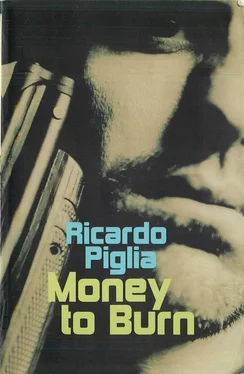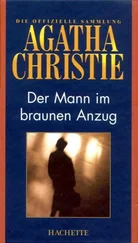Ricardo Piglia - Money to Burn
Здесь есть возможность читать онлайн «Ricardo Piglia - Money to Burn» весь текст электронной книги совершенно бесплатно (целиком полную версию без сокращений). В некоторых случаях можно слушать аудио, скачать через торрент в формате fb2 и присутствует краткое содержание. Год выпуска: 2004, Издательство: Granta UK, Жанр: Современная проза, на английском языке. Описание произведения, (предисловие) а так же отзывы посетителей доступны на портале библиотеки ЛибКат.
- Название:Money to Burn
- Автор:
- Издательство:Granta UK
- Жанр:
- Год:2004
- ISBN:нет данных
- Рейтинг книги:5 / 5. Голосов: 1
-
Избранное:Добавить в избранное
- Отзывы:
-
Ваша оценка:
- 100
- 1
- 2
- 3
- 4
- 5
Money to Burn: краткое содержание, описание и аннотация
Предлагаем к чтению аннотацию, описание, краткое содержание или предисловие (зависит от того, что написал сам автор книги «Money to Burn»). Если вы не нашли необходимую информацию о книге — напишите в комментариях, мы постараемся отыскать её.
Money to Burn — читать онлайн бесплатно полную книгу (весь текст) целиком
Ниже представлен текст книги, разбитый по страницам. Система сохранения места последней прочитанной страницы, позволяет с удобством читать онлайн бесплатно книгу «Money to Burn», без необходимости каждый раз заново искать на чём Вы остановились. Поставьте закладку, и сможете в любой момент перейти на страницу, на которой закончили чтение.
Интервал:
Закладка:
By this stage all the highway police had been alerted, along with all the surveillance divisions along the main routes in and out of the Federal Capital. And the Federal Police's radio command centre had also been switched to high alert.
However, neither the police stations nor the mobile police units covering the wealthy Zona Norte in the city suburbs could keep up with the pace set by the gunmen in their stolen Rambler. A great many provincial police divisions were out that night patrolling a wide swath of Greater Buenos Aires.
3
The evening papers carried headline news of the catastrophe. Their first hypotheses invited readers to visualize some kind of commando raid. Investigative journalists associated the robbery with an assault mounted on the Bank's own health centre by a group of nationalists some months previously.{1}
There were, according to their surmises, certain common elements: people from Tacuara or from the Peronist resistance, lower army officers released from the services and now in the employ, if rumours were to be believed, of the Algerian guerrilla movement. 'The Algerians', as they were called in the movement, led by José Luis Nell and Joe Baxter, burst into the health centre waving machine-guns and made off with 300,000 dollars. The police were following a line of investigation in which cells of Peronist nationalists had begun operating alongside common criminals in an explosive combination that was keeping the authorities seriously worried. There was something in it. Hernando Heguilein, 'Nando', a former member of the National Liberation Alliance,{2} a recognized shock troop during the period of Peronism, had been mentioned together with Malito at the siege on Arenales Street, there to resolve the gang's operational withdrawal and retreat. Nando was a man of action, a patriot in the eyes of some, a 'mole' according to others, a bloodthirsty lumpen proletarian in the view of the police inside the Department.
The daily papers' articles were written between the lines and numerous counter-intelligence operations were covertly running in the midst of the news.
For example, it was revealed that in checking over the Chevrolet left abandoned by the assailants, the police confirmed their suspicion that one of them had been wounded. From inside the car they recovered: one long-sleeved grey pullover, one hand towel, and one sack, all stained with blood. There were traces of drugs on the car floor, as well as several syringes and a small phial of anticoagulant. As well as all this, they found two 45-calibre double-barrel Halcón sub- machine-guns, each able to take sixty-four bullets, and an unopened case of ammunition. By way of detail illustrative of the assailants' danger to the public (or so said the press), they could point to the fact that each machine-gun had been modified so that the safety catch was jammed with a bolt in the intention that, when it was fired, it emptied whole rounds of fifty bullets at a time. The car itself showed four points of impact on its nearside wing. Next to the site of the accident, and beside the gunmen's car, lay a kit-style bag with 18,000 pesos still inside it. When an examination of the arms left behind in the Chevrolet by the assailants following the car crash was undertaken, it was established that those firing the 9-millimetre machine-gun must have been using a weapon belonging to the same category as a German make, known as a Bergman, or a Paraguayan Piripipi.
According to the most up-to-date reports, the police investigating the bloody assault paid particular attention to the bags abandoned by the malefactors during their flight (some from the crashed Chevrolet, others fallen during the chase). They were made of sailcloth, navy-style, and it was assumed that they were specially manufactured to transport the stolen money. This type of bag is commonly used as military issue. The police made contact with their corresponding numbers in the Naval Prefecture. In addition to all this, the 45-calibre Halcón is a strictly military-issue weapon. It was via this route that an investigation opened into the assumed military connections of the gang.
Inside the car, experts from the Fingerprints Division of the Scientific Police Superintendence dusted for fingerprints supposedly left by the assailants in differing places and on the weapons themselves, and these fingerprints were supposed to lead the investigators to conclusions regarding the identity of the fugitives.
That evening, when the press stories were put to bed, personnel belonging to the Robberies and Larcenies Division conducted a number of house-to-house searches and even house break-ins at various points of the Federal Capital and of Greater Buenos Aires in the search for gang members.
On reading the newspapers, Malito was surprised by the speed with which the police got on their tail. To the typically repulsive and abject style that was their wont (according to Malito), the daily papers now added details intended to embellish the facts in a shamelessly crude and explicit manner ('… Andrea Clara Fonseca, six years of age, who let go of her mother's hand, was hit by a hail of machine-gunfire let loose by one of the criminals, and her face was turned into a bloody cavity…'). 'A bloody cavity', Malito returned again to slowly reading that line, without thinking of anything at all, without seeing anything apart from the letters and the blurry image of a fair-haired child resembling a naked cherub in a church. At times, the savage pleasure with which he read the police news convinced him of the impossibility of excavating the moral root of the facts of his life, because in reading about what he himself had done, he felt both satisfied at not having been recognized, and at the same time saddened at not seeing his own photo, while secretly preening himself at this dissemination of his disgrace being anxiously devoured by thousands upon thousands of readers.
Malito was then, like every true gangster, an avid reader of the crime pages of the daily papers, and this was one of his weaknesses, because the primitive sensationalism that cruelly resurfaced in the face of each new crime (the fair-haired girl whose face had been destroyed by gunfire) made him think that his brain was not all that strange when compared with those degenerate sadists who gloat over horrors and catastrophes, made him think his mind was on a level with the minds of those guys who'd done what he read about in the papers, and he secretly thought of himself as one of those criminals, even though in public everyone looked on him as a cold and calculating type, a scientist who organized his actions with the same precision as a surgeon. Naturally, a surgeon (like his father, for example) lived with his hands tainted with blood, ripping open the flesh of naked and defenceless invalids and trepanning away with sophisticated instruments, puncturing and mechanically sawing at the living skulls of his beloved victims.
Abandoning the Chevrolet had been a mistake, and this error gave the police a trail which was enough to provoke a chain reaction, causing all the dominoes to topple in a row. Malito knew that they had broken into the San Fernando hotel where he'd spent the night preceding the assault with Twisty Bazán. Naturally enough, the police weren't revealing any information they'd obtained there.
In a manner at once threatening and indifferent, the police announced they knew the identity of at least two of the gang members. Or so the second chief of the Robberies and Petty Larcenies Division of the Zona Norte in the province of Buenos Aires, Cayetano Silva, assured the press.
'I am leaving aside the possibility that a degree of internal collusion with personnel at the Town Hall may have taken place a priori ,' declared Police Commissioner Silva.
They were putting up a smokescreen, to protect their line of information. Malito had the feeling that they were already waiting there on his doorstep. Things never work out as you expect them to, and luck is more important than courage, more important than intelligence and security measures. Fortune, paradoxically, always favours the side of the established order of things and is (along with denunciation and torture) the principal means by which investigators can close the loop and finally snare those who attempt to render themselves invisible in the urban jungle.
Читать дальшеИнтервал:
Закладка:
Похожие книги на «Money to Burn»
Представляем Вашему вниманию похожие книги на «Money to Burn» списком для выбора. Мы отобрали схожую по названию и смыслу литературу в надежде предоставить читателям больше вариантов отыскать новые, интересные, ещё непрочитанные произведения.
Обсуждение, отзывы о книге «Money to Burn» и просто собственные мнения читателей. Оставьте ваши комментарии, напишите, что Вы думаете о произведении, его смысле или главных героях. Укажите что конкретно понравилось, а что нет, и почему Вы так считаете.












